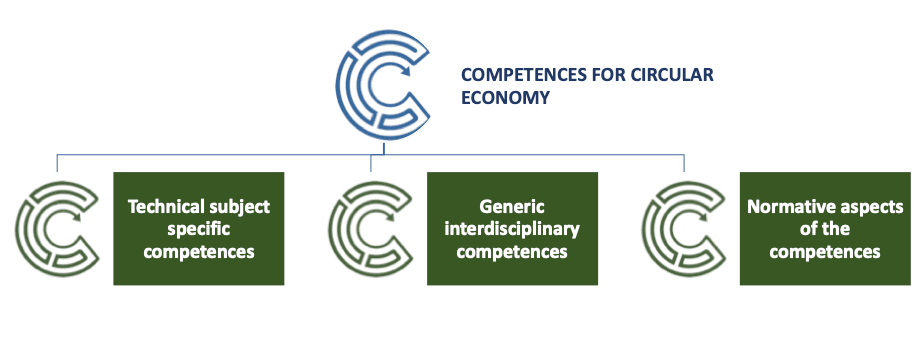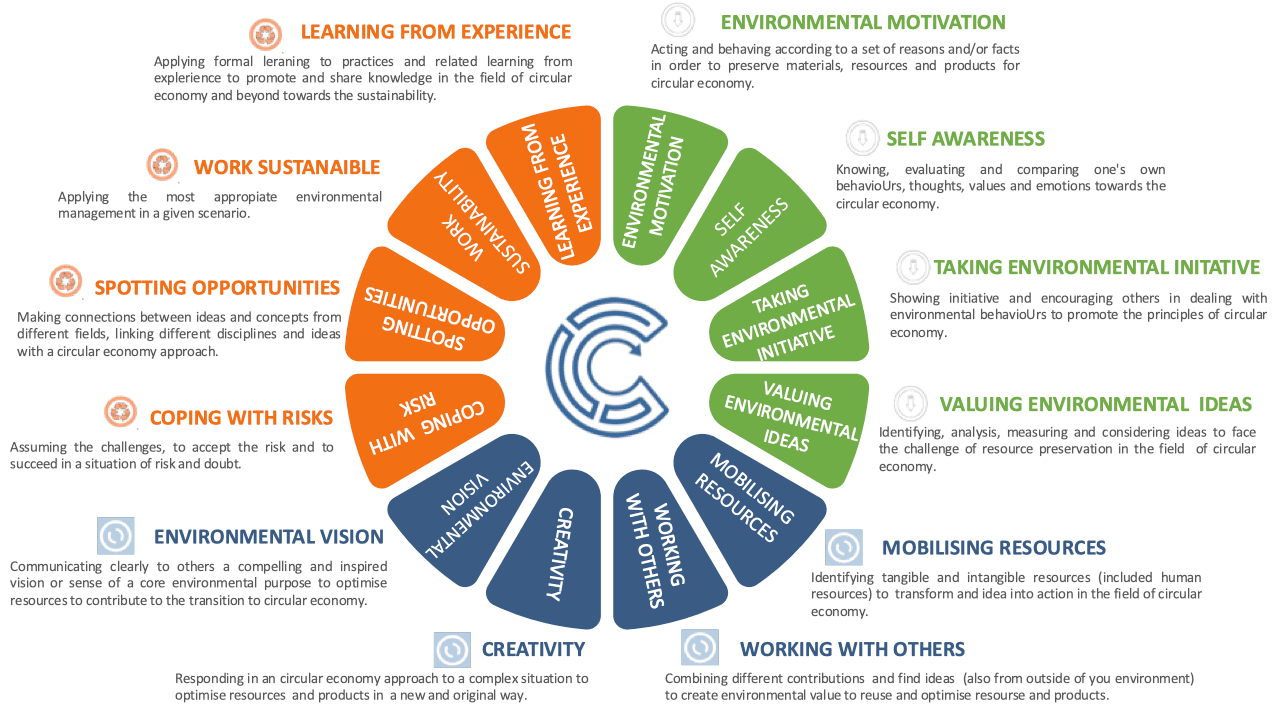Our reference point
We can define competencies for the circular economy as those that are key to a sustainable future and that range from a detailed knowledge of resources and raw materials to a rich understanding of social behaviours required to create a model that works for society, the economy and the environment.
As we can observe, this concept covers the two areas of transformation of the circular economy: production and consumption. Both contain theoretical knowledge and social skills that need to be developed and updated. From this perspective, the following illustration gives an overview of the three main areas of competence that characterise the circular economy:

The picture above presents the different types of competences that contribute to the development of competences for circular economy. Thus, we can find three different fields when we talk about green skills:
- Technical competences, that is those competences related to specific tasks in each occupation.
- Generic interdisciplinary competences, that is those related to transversal areas of knowledge needed to support any occupation; and
- Normative competences, that is, those (also) transversal skills related to the vision and values needed to support the transition to a circular economy model.
CYCLE competence framework

Based on a circular approach, there are three types of competence:
- Competences aimed at contributing to minimize the use of products and materials maintaining value as long as possible (preserving) – NARROWING THE LOOP.
- Competences aimed at contributing to maintaining products and materials at their highest utility (optimising) – SLOWING THE LOOP.
- Competences aiming to use a product again (when it reaches the end of its life), creating further value (fostering effectiveness) – CLOSING THE LOOP.
We will include in each of these categories transversal and personal competences that support the main concepts included in each of them. Thus, we propose the following competence scheme:

You can download a more detailed version of our pedagogical model as a pdf-file here:
